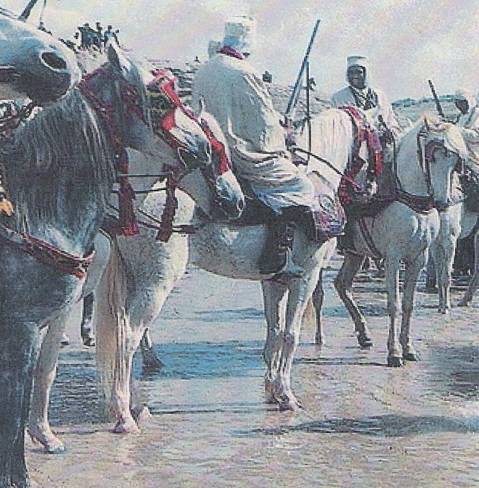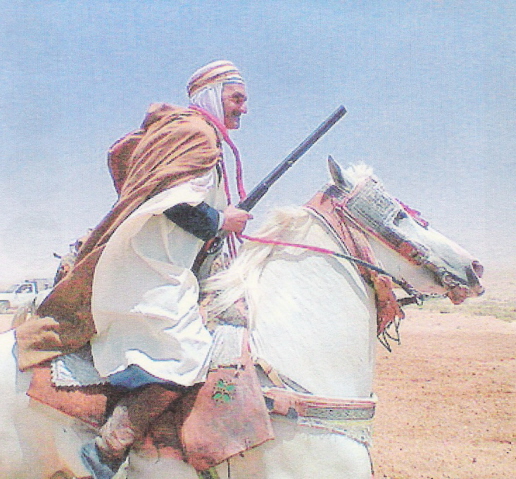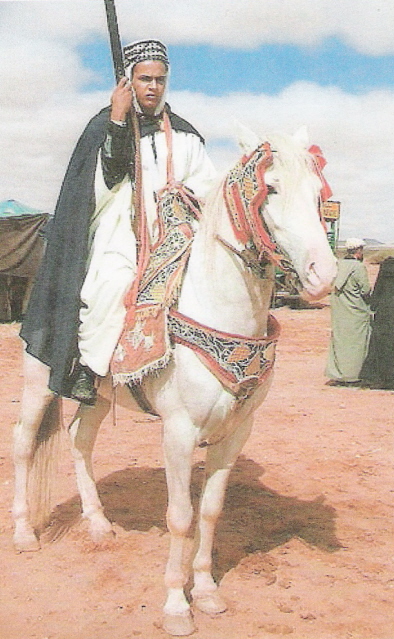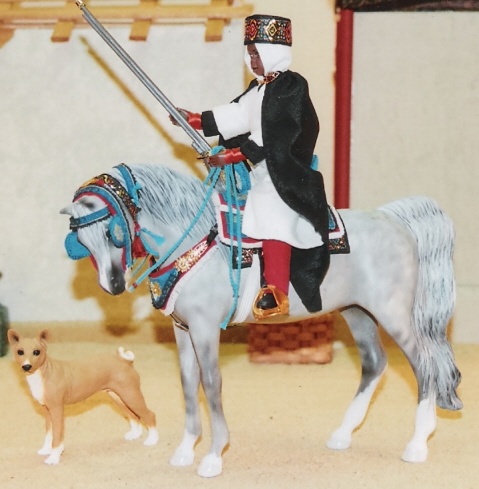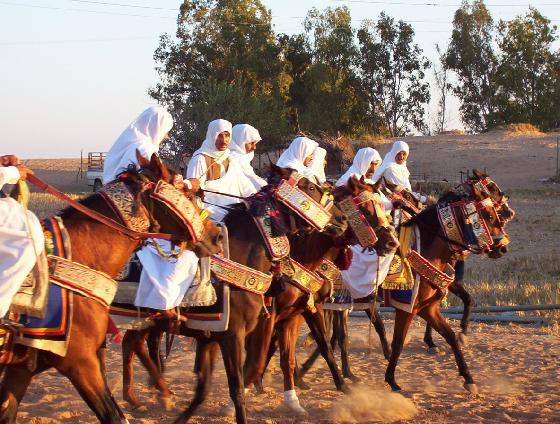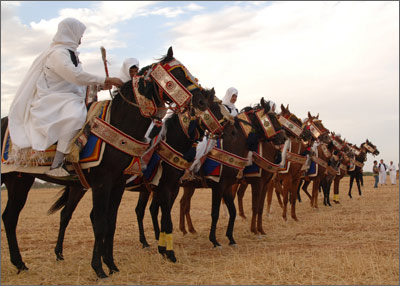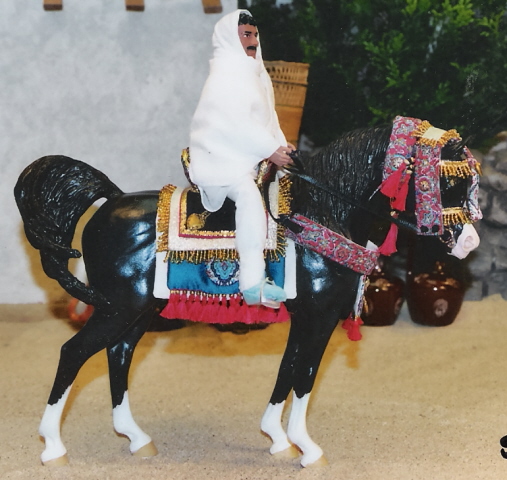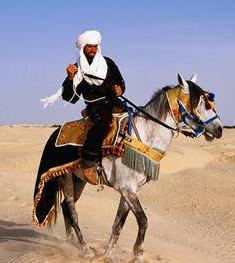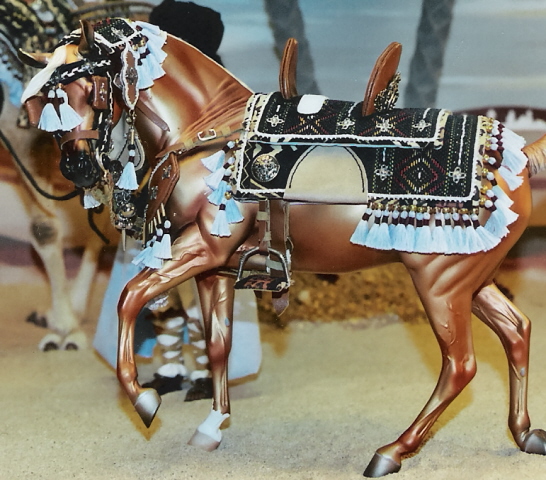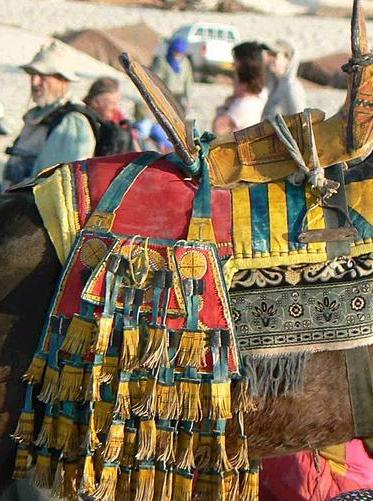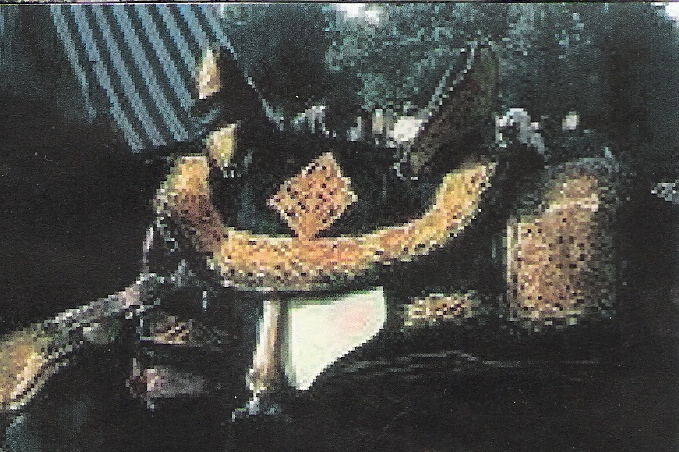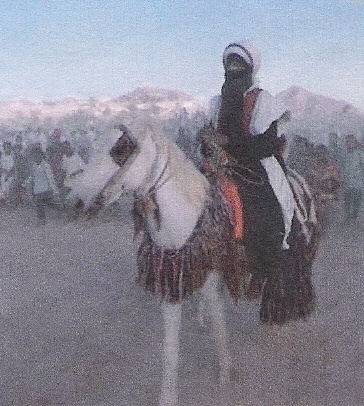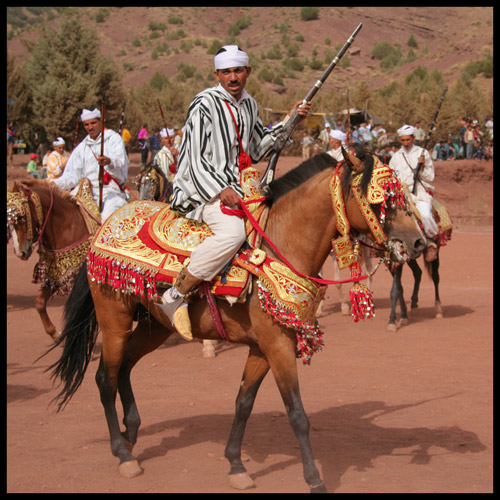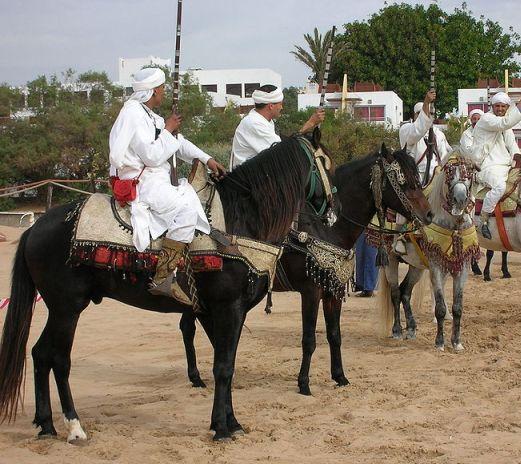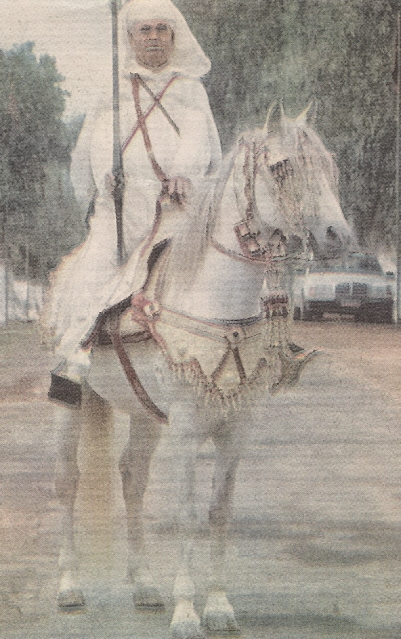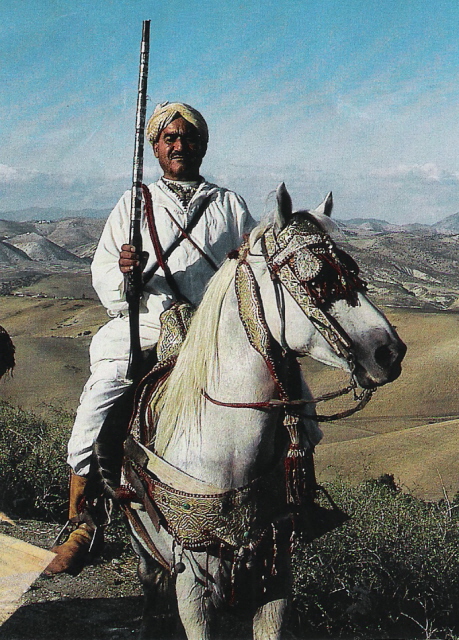IMEHA (International Model Equine Hobbyists Association) was an online photo showing site that existing until 2018. Included on the site were these guidebooks for judging and showing model horses in Performance classes. MEPSA has obtained permission to share the info contained in the guides.
Arabian Costume Native Berber (North African):
Berbers are the indigenous peoples west of the Nile Valley who converted to Islam and assisted the Arab conquerors of North Africa. Some, but not all, have black African ancestry; most are descendants of immigrants to North Africa in historical times from around the Mediterranean and Asia Minor.
Libyan:
CHARACTERISTICS: One white and one or more colorful saddle pads, sometimes with fringes. Jineta saddle with embroidered and fringed saddle cloth. Any type of bridle acceptable. Brocaded silk-and-leather or tooled-and-colorized/gold-leafed leather breast collar, neck collar and wide decorative halter worn over the bridle. Tassels may adorn the breast collar and bridle. English type stirrups. (See photos Libyan One, Two, Three, Four)
Algerian:
CHARACTERISTICS: Plain, solid colored square saddle pad, sometimes fringed. Jineta saddle with brocaded silk-and/or-cut-leather or tooled-and-colorized/gold leafed leather saddle cover, saddle bags, breast collar and bridle-neck collar combination. Tassels may adorn breast collar and bridle-neck collar combination. Triangular platform stirrups. Blinkers on bridle. (See photos Algerian One, Two, Three, Four)
Tunisian:
CHARACTERISTICS: Large rectangular fringed saddle pad that covers the entire back of the horse and hangs down over the rump and tail; prior to WWII this was made from brocaded/embroidered silk. Jineta saddle with matching fabric saddle cloth, breast collar and bridle. Longer fringes on breast collar. A separate halter may be worn under the bridle. Any style of stirrups are acceptable. Blinkers on bridle. (See photos Tunisian One, Two)
Tuareg:
The Berbers of the Sahara, dwelling and traveling widely in Egypt, Libya, Algeria, Morocco, Niger, Mali, Chad and the Sudan. CHARACTERISTICS: Tuareg horse tack varies greatly depending on a tribe’s geographic relation to Egypt or Morocco, and tribal or personal preferences, however most tack is a blend of Algerian and Moroccan. The Tuareg are great artisans of metal and their tack is ornamented with more metal amulets than other Arabian costume styles. Fringes may be used instead of tassels. Decorative saddlebags with long fabric fringes are common. Any style of stirrups are acceptable including the toe stirrups of Central Africa. With or without blinkers on bridle. (See photo Tuareg One, Two, Three, Four)
Moroccan:
The Mercedes Benz of North African tack. CHARACTERISTICS: Plain, solid colored saddle pad, sometimes fringed. Jineta saddle with brocaded silk-and-leather or tooled-and-colorized/gold-leafed leather saddle cover, saddle pad, breast collar and bridle. Small tassels or fringes color-coordinated to the larger tack elements. Metal amulets on breast collar and bridle. Triangular platform stirrups. Blinkers on bridle. (See photos Moroccan One, Two, Three, Four, Five)

